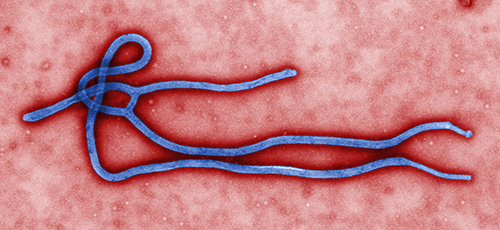
The exact origin, locations, and natural habitat (known as the "natural reservoir") of Ebola virus remain unknown. However, on the basis of available evidence and the nature of similar viruses, researchers believe that the virus is zoonotic (animal-borne) and is normally maintained in an animal host that is native to the African continent. A similar host is probably associated with Ebola-Reston which was isolated from infected cynomolgous monkeys that were imported to the United States and Italy from the Philippines. The virus is not known to be native to other continents, such as North America.
You’re a physician working in West Africa for Doctors Without Borders, and a child has been brought into your clinic who is febrile and complaining of a headache, fatigue, and malaise. Given your locale and the current season, two of the most probable diagnoses would be either malaria or Ebola. While neither disease provides a positive prognosis for the patient, Ebola has the capability of spreading rapidly to many other individuals and would require quarantining as soon as possible.
Time is of the essence, but so is accuracy as the panic of an Ebola infection would spread even faster than the disease itself. Moreover, should your prognosis prove wrong and the child actually have malaria, any Ebola therapy would be completely ineffective.
These are real scenarios that many physicians have to face daily and not just in underdeveloped parts of the world. Infectious diseases could just as easily spread (and have) through hospitals, schools, cruise liners, and food preparation plants. While our current monitoring systems are relatively effective at isolating and identifying the offending microbe during an outbreak, speed is always a most welcome ally in the diagnostic instrumentation realm.
For the rest of the story, click here.











